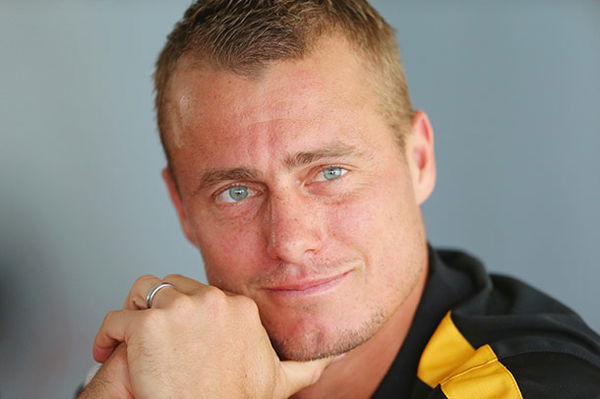

The Lleyton Hewitt tale began in 1998, when he made people sit up and take notice as he became one of the youngest to ever win an ATP tournament, winning in Adelaide, en route which, he defeated Andre Agassi in the SFs. But the transition from this promising young talent to the World No. 1 at the age of 20, the speed of it, is what left many gasping. Usually, even the best of junior pros take 2-3 years to find their feet in the ruthless world of highest level tennis. Hewitt’s counterpart in every sense of the word, the one person who has been constantly on the other side of the net, Roger Federer also took 3 years before he could win a Grand Slam. But, when others were still trying to settle in, Hewitt went ahead and won the US Open in 2001, against the mighty Pete Sampras in his own backyard, at the age of 20. The boy from Adelaide was now a man, who would go on to become a legend of the game. This victory was a follow up to the Doubles title he won at Flushing Meadows in 2000, partnering Max Mirnyi. He ended 2001 as the World No. 1, and was dating then Women’s tennis’ hottest emerging prospect, Kim Clijsters.
ADVERTISEMENT
Article continues below this ad
2002 continued in the same vein, Hewitt picking up where he left off. He won a few ATP titles that year too, but the jewel in the crown was the Wimbledon that he won, defeating David Nalbandian in the final. What made the victory all the more special was the contrast in the surface and the style of play. The green of the All England Club has always been a very fast surface, and thus assisting serve and volleyers, the Federers and the Samprases, players who tend to have a scorching forehand, who dominate points, approach the net and attack. Hewitt, was the polar opposite. His style of play was always defensive, with nothing special on the forehand, but he had one of the best backhands in the business, assisted by an endurance runner like stamina and an iron will all his own. He was, what is called in tennis terms, a ‘baseliner’, the first since Agassi in 1992 to triumph at SW19. He was assisted by his shot selection ability, one which Agassi described as “one of the best in the history of the game”.
What followed can perhaps be described as the greatest relegation to ‘tennis’ almost there men’. Hewitt lost in the first round of Wimbledon 2003, which gave Roger Federer the opportunity to finally claim his first Grand Slam. Rest, as they say, is history. Federer went on to become the greatest of all time, and unfortunately for Hewitt, what should have been his peak, coincided with the peak of the Swiss. They played each other 27 times, with Hewitt taking 7 of the first 9 matches, but, as Federer ascended the throne, there was no stopping him, as he rallied back to win 16 of their last 18 wins. Hewitt’s greatest opportunity came at the Australian Open 2005 as he reached the Final, but fell to Marat Safin at the final hurdle. After that, it was always a case of missed opportunities and almost there, for Lleyton Hewitt almost always lost to the eventual champion in any tournament he participated in.
ADVERTISEMENT
Article continues below this ad
They say a man’s peers and foes are the best judge of a man’s character. Hewitt certainly received a glowing sendoff from the tennis fraternity, as tributes poured in from all corners, from players past and present. His conqueror in his final match, David Ferrer, said of him, “I never had idols but he is one for me. I have a T-shirt signed by him from seven years ago. I have a museum in my house and that is in it – it’s the only T-shirt of a tennis player I have.” Australian tennis’ next big hope, Nick Krygios, sent off the champion pleading him to come back, for “Don’t go mate, you’re playing such a high level of tennis, you’re definitely still the best player in Australian tennis.”
ADVERTISEMENT
Article continues below this ad
Was Hewitt unlucky to have been born in tennis’ golden generation? Would he have won more had he been playing in a different era? Probably yes. Would Hewitt have liked this easy way out? Definitely no. Maybe, Hewitt did peak too early in his career, for now, players comfortably win Slams at the age of 26-27. Whatever be the case, Hewitt certainly inspired a generation of youngsters to pick up the racquet and chase their dreams. Players like Roger Federer, they are preternaturally gifted, and one can’t hope to be like them. It is the Hewitts and Nadals of the world, who stand as testament to the fact that graft does pay, in the grandest manner possible. There would be no more pumped up “Come On!” for the crowd to feed on. Adios Rusty, the pleasure has been ours.
ADVERTISEMENT
ADVERTISEMENT
ADVERTISEMENT
ADVERTISEMENT

